Valentine’s in the Garden
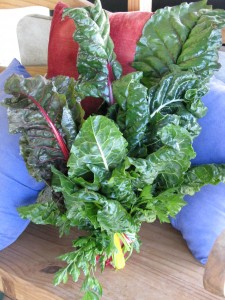
Another gorgeous day in the garden today. I gave a chard bouquet to my friend Lara who has been so kind as to teach me piano over the last two months (I’ve progressed from the ‘clink clink’ stage to the two-handed ‘clink-clink-CLINK’ stage. Lara deserves chard!). My best Valentine’s was receiving my box of organic seeds from Botanical Interests. Yep, ordered too many again. At least it won’t make me fat.

It was warm enough for shorts, and since my neighbors can’t see me, I indulged for awhile.
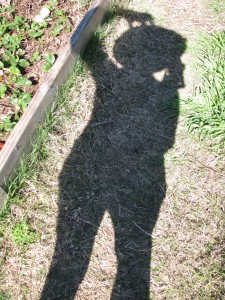
At the end of December I had planted two flats of seeds and stuck them in the greenhouse; one had winter veggies and the other native plants.
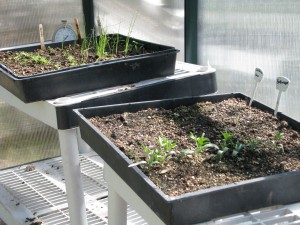
A couple of weeks ago I was telling my daughter in college that only one of each had come up so far. She pointed out that the two were curiously linked: bladderpod and leeks! It seems even my garden is a comedian. Today I transplanted the bladderpod into larger containers.

Bladderpod (Isomeris arborea) is a true California native living at home in the desert or at the coast and usually in the worst soils. It flowers most of the year even in drought conditions, providing nectar for pollinators and hummingbirds. The plant doesn’t smell so great, but it has wonderful balloon-like pods that rattle when dry. It is a fantastic addition to gardens.
In planting seeds in flats it always looks as if roots are shallow until you take the plant up and find a healthy and sometimes long root system. Don’t let the top growth make you think that the roots aren’t developed.
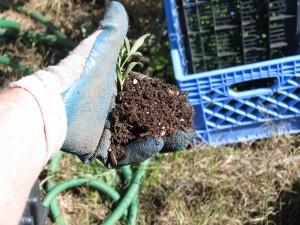
No more natives are showing their faces in the flat yet, but they have their own schedule and I’ll continue to watch the flat for signs. Just as animals (including humans) respond to circadian rhythms with the 24/hour sleep/wake cycle, plant growth is cued in not only by warmth, but by length of daylight hours. For plants it is called photoperiodicity. You can casually throw that into a conversation over the dinner table tonight and see if anyone notices. A plant’s response to daylight length is called photoperiodic. There is much more to this, and you can read up on it here. So to make a short story longer, I don’t manipulate the light in the greenhouse so I wait longer time than recommended for seeds to sprout just in case they really don’t want to get out of bed yet. I can empathize.
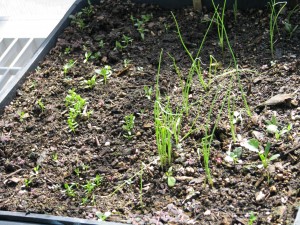
In the veggie flat celery and parsnips have decided to sprout so I’ll transplant them out in a week or two.
Elsewhere in the garden the nitrogen-fixers are working away.
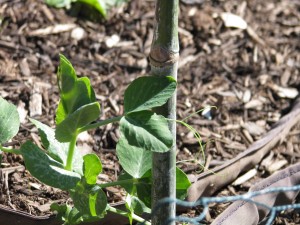
Fava beans have sprouted from leftover seed from last year and they are already in bloom.
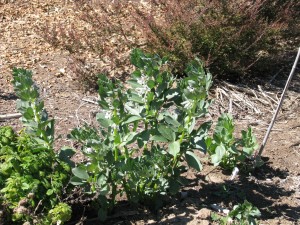
The weather is so beautiful that I want to plant the summer veggies… I’m yearning for tomatoes! I will be good and wait a few more weeks until all chance of frost is gone (hopefully the weather won’t be too crazy and frost in March!). Then, look out! Seeds everywhere! And yes, by popular demand I will write about trashcan potatoes.